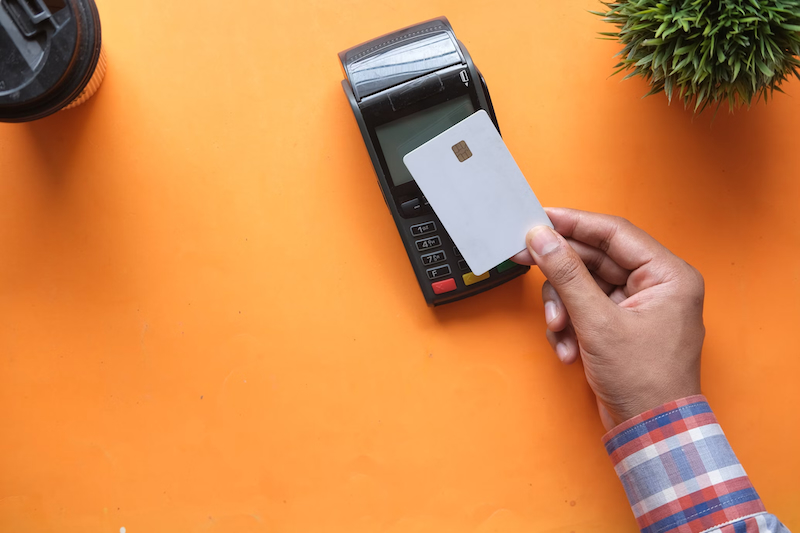
In the ever-changing retail environment, no-contact stores have emerged as a groundbreaking solution. These stores minimize physical interactions and maximize convenience. As they become more common, the challenge is to maintain a high-quality customer experience. In this article, we explore the strategies and technologies that no-contact retail stores can use to meet and exceed customer expectations. How do cutting-edge technology, customer-centric design, and well-designed wayfinding combine to create a successful client experience? Read on.
The Evolution of No-Contact Retail
The popularity of no-contact retail stores has surged, primarily driven by the COVID-19 pandemic and an increased demand for safety and convenience. Technological advancements have been pivotal in this evolution, providing the tools necessary for a seamless, contact-free shopping experience. From mobile apps and online platforms to self-checkout systems and contactless payments, these innovations ensure that customers can shop efficiently and safely.
Key Technologies in No-Contact Retail
No-contact retail stores rely on a range of advanced technologies to improve the customer experience. Mobile apps and online platforms play a key role in browsing, purchasing, and managing orders from anywhere. Self-checkout systems and kiosks enable quick and contactless transactions, reducing wait times and enhancing convenience. RFID and QR codes provide instant product information and streamline the payment process, while contactless payment methods ensure fast and secure transactions, increasing customer satisfaction.
Personalization in a No-Contact Environment
Personalization remains important for ensuring customer satisfaction, even in a no-contact setting. Data analytics drive personalized marketing, enabling stores to send targeted promotions and recommendations based on individual shopping habits. AI algorithms suggest products tailored to customer preferences, enhancing the shopping experience. Virtual shopping assistants and chatbots provide real-time support and guidance, emulating in-store assistance. Additionally, personalized loyalty programs cultivate customer loyalty and promote repeat business through customized discounts and rewards.
Case Study: Chestnut Markets
Chestnut Markets is an exemplary case study in successfully implementing no-contact retail strategies. According to C-store News, Chestnut Markets has effectively integrated advanced technologies to enhance customer experience while maintaining safety and convenience. Their use of mobile apps, contactless payment systems, and personalized marketing has set a benchmark in the industry, illustrating the potential of no-contact retail to meet and exceed customer expectations.
Enhancing the In-Store Experience
It is essential to create an engaging in-store environment, even with minimal physical contact. Streamlined store layouts are optimized for easy navigation, reducing the time customers spend in-store. Augmented Reality (AR) technology allows virtual try-ons, bridging the gap between online and in-store shopping. Interactive digital displays provide engaging content and product information, enhancing the shopping journey. While minimizing contact, having knowledgeable staff available for essential assistance ensures that customer needs are met promptly.
Customer Navigation and Orientation
Clear and effective wayfinding and signage are essential in a no-contact retail environment. Properly designed signage helps customers navigate the store more easily, reducing confusion and frustration and enhancing the overall shopping experience. Custom wayfinding solutions, including directional signs and informative displays, guide customers through the store, ensuring they find what they need quickly and efficiently. Well-designed and strategically placed signage improves the customer experience and drives sales by facilitating easy product access.
Creating Engaging Retail Spaces
Even in no-contact stores, the physical environment plays a significant role in shaping customer experiences. Strategic retail design involves creating captivating spaces that resonate with customers. Thoughtfully designed spaces engage customers and make the shopping experience more enjoyable. Aesthetically pleasing décor, functional layouts, and immersive elements draw customers in and encourage them to explore the store.
Ensuring Customer Trust and Security
Building and maintaining trust is vital for no-contact retail stores. Robust data privacy and security measures protect customer data and ensure transparency in data usage. Offering reliable and secure payment methods reassures customers about the safety of their transactions. Clear communication about health and safety protocols enhances customer confidence in shopping at no-contact stores.
Feedback and Continuous Improvement
Customer feedback is essential for ongoing improvement. Digital channels such as surveys and social media allow retailers to gather customer opinions effectively. Analyzing this feedback helps identify areas for enhancement, and implementing changes based on customer input demonstrates responsiveness. Keeping customers informed about improvements and new features ensures they remain engaged and satisfied.
The Future of No-Contact Retail
The future of no-contact retail is filled with potential innovations and challenges. Emerging trends such as AI, machine learning, and blockchain are expected to enhance the shopping experience further. Addressing technology adoption, customer education, and maintaining personalization will be crucial. The shift towards no-contact retail will likely have lasting effects on the industry, reshaping how consumers interact with retailers.
Summary
No-contact retail stores minimize physical interactions while maximizing convenience, safety, and personalization. By combining advanced technologies, clear wayfinding, and engaging environments, these stores maintain a high-quality customer experience even with minimal staff contact.
From mobile apps and self-checkout to AR experiences and personalized recommendations, no-contact retail balances innovation with human-centered design. Clear signage, optimized layouts, and immersive in-store elements ensure customers navigate efficiently, stay engaged, and enjoy seamless transactions.
Key Takeaways
- Integrate mobile apps, self-checkout, RFID, QR codes, and contactless payment to enhance speed and safety.
- Leverage data analytics and AI to provide personalized recommendations, promotions, and loyalty rewards.
- Optimize store layouts and wayfinding to guide customers efficiently and reduce in-store time.
- Use digital displays, AR, and interactive elements to create engaging, immersive shopping experiences.
- Ensure robust data privacy, security, and clear health protocols to build customer trust.
- Collect and act on feedback to continuously improve the no-contact experience.
Frequently Asked Questions
Q. What is no-contact retail?
A. No-contact retail minimizes physical interactions through technology such as mobile apps, self-checkout, and contactless payments, creating a safe, convenient, and efficient shopping experience.
Q. How do no-contact stores maintain personalization?
A. Personalization is achieved using data analytics, AI algorithms, and virtual assistants to provide tailored promotions, product suggestions, and loyalty rewards that align with individual shopping habits.
Q. What technologies are essential in no-contact retail?
A. Key technologies include mobile apps, online ordering platforms, self-checkout kiosks, RFID and QR codes, contactless payment systems, AR, and interactive digital displays.
Q. How is store layout optimized for no-contact retail?
A. Layouts are streamlined to guide customers efficiently through the store, with clear signage and well-marked pathways reducing in-store time and enhancing navigation.
Q. How do no-contact stores build customer trust?
A. Trust is built through robust data privacy, secure payment methods, clear communication of health and safety protocols, and transparency in technology use.
Q. What role does feedback play in no-contact retail?
A. Customer feedback is essential for continuous improvement. Digital surveys and social media feedback help retailers enhance store experiences and implement changes based on customer needs.
